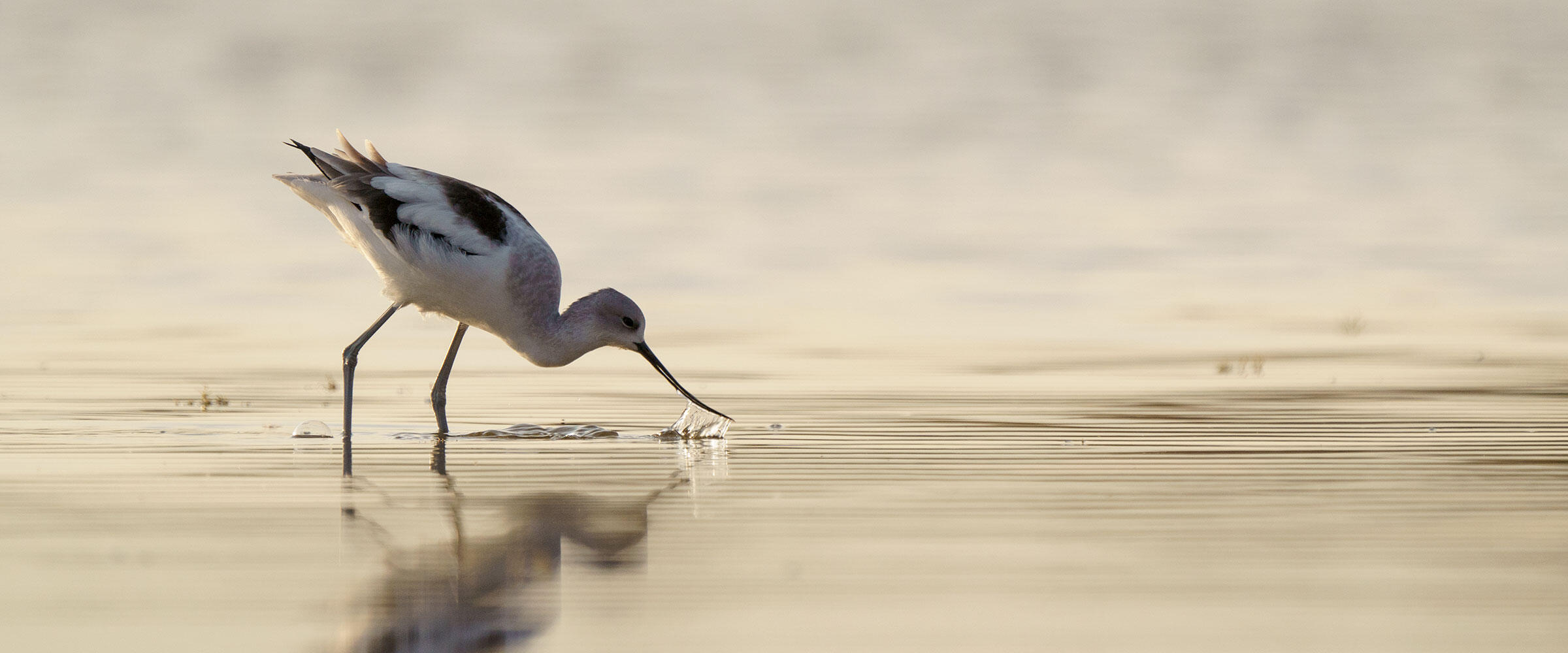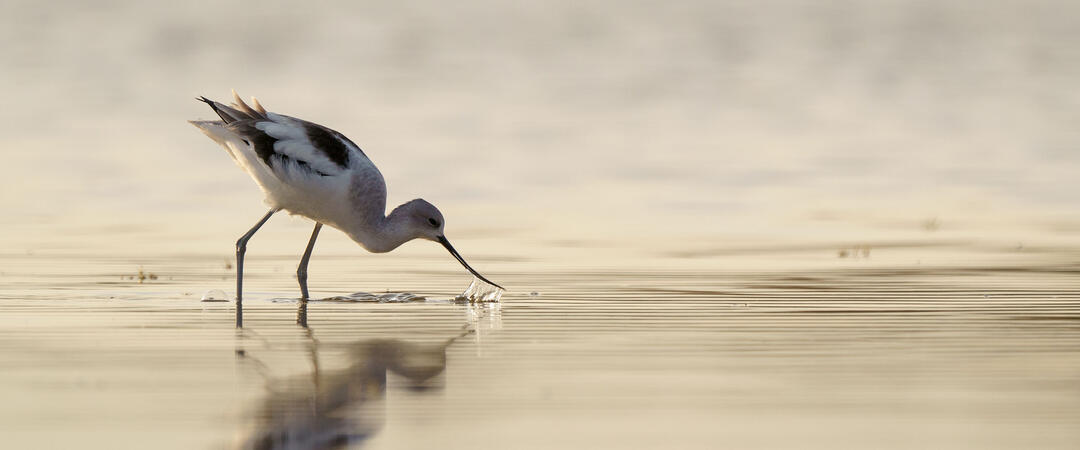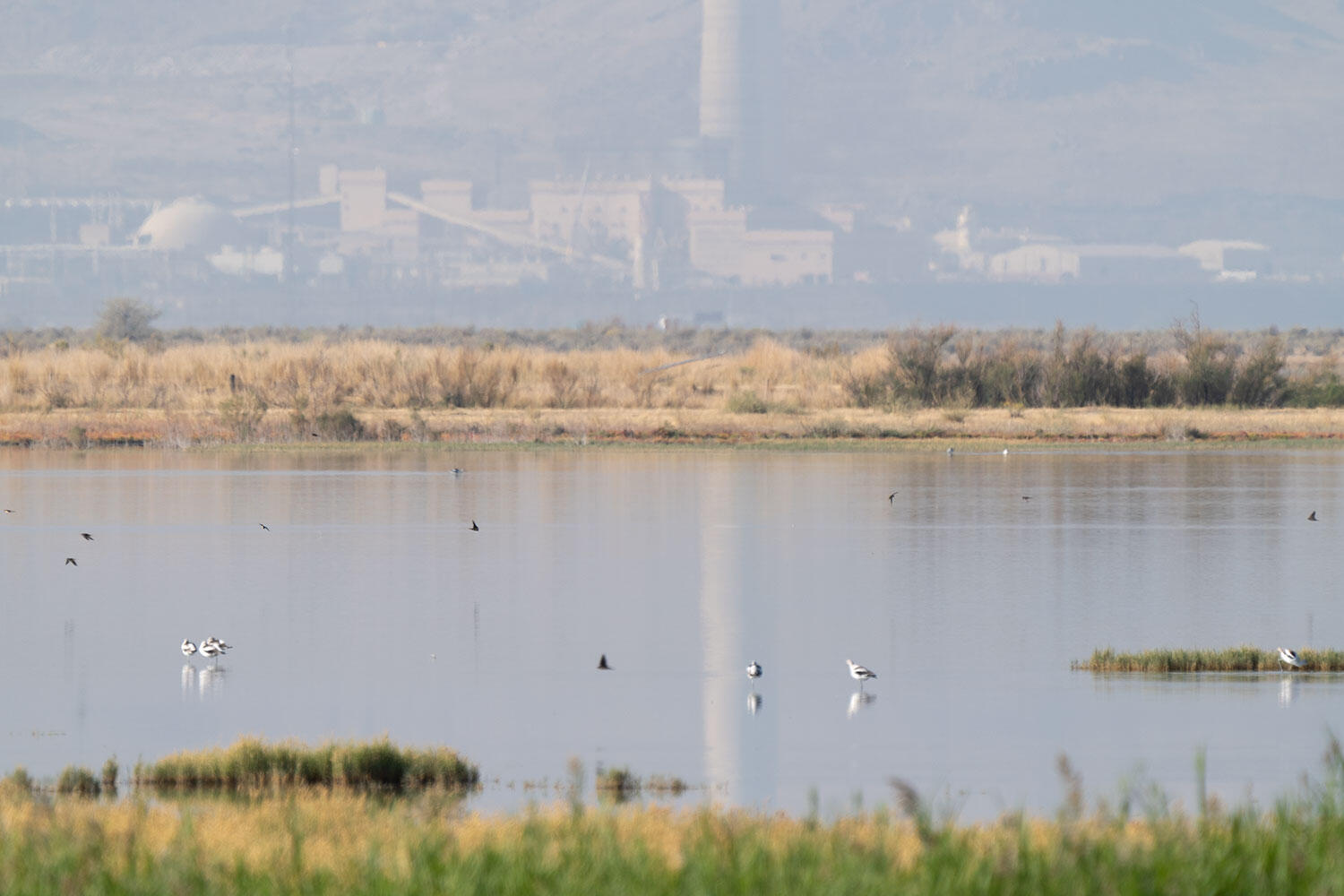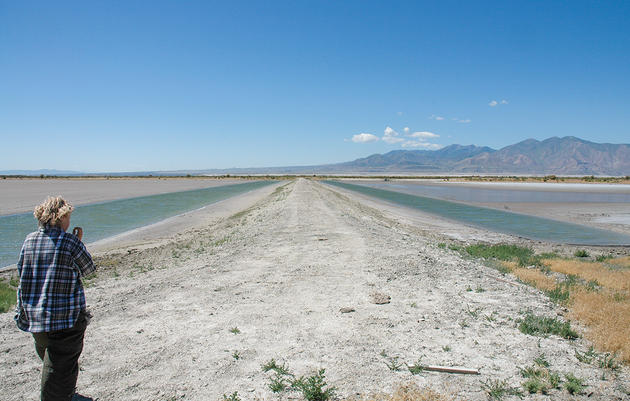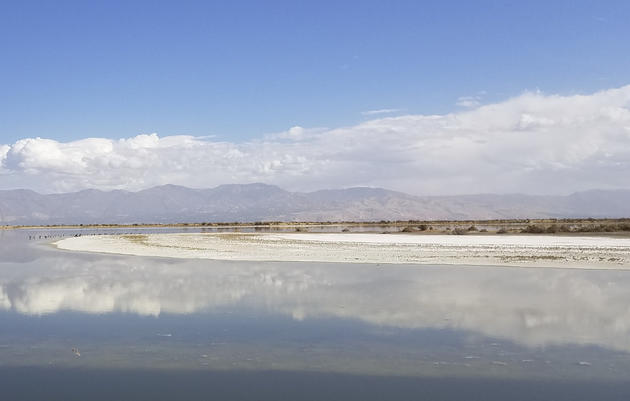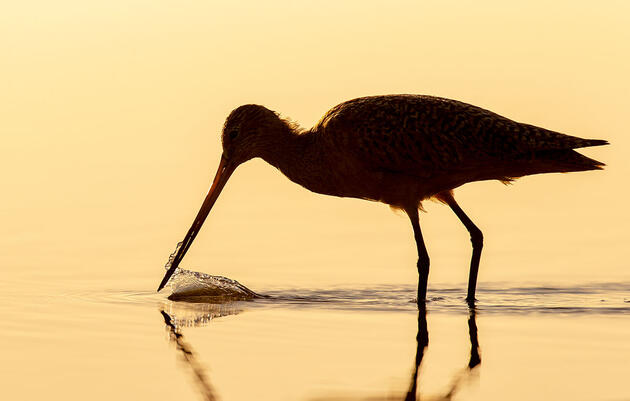Today is a momentous one for Audubon’s efforts to restore shorebird habitat along Great Salt Lake. Epperson Associates, LLC has donated a 413-acre property worth $1 million to Audubon’s Gillmor Sanctuary. The true value of this donation, however, lies not in these numbers, but in water.
The Epperson property not only contains portions of the ancient Jordan River delta that are highly desirable for wetland restoration; it also holds the water delivery system for all of Gillmor Sanctuary. In 2005, Epperson Associates, LLC donated a canal right-of-way easement that extends the North Point Canal half a mile and an eight-acre flood easement across the Epperson property that have since allowed water to flow into the sanctuary and sustain critical habitat for countless shorebirds. In transferring full ownership to Audubon, Epperson Associates LLC ensures future protection for this critical water infrastructure for the sanctuary and its wildlife.
“The North Point Canal delivers water to the entire sanctuary. So the donation of this land is critical for one reason: it allows us to control our water delivery system for the entire sanctuary,” said Gillmor Sanctuary Manager Ella Sorensen.
Audubon founded the sanctuary on the southeast shore of Great Salt Lake in 1994 to conserve habitat for birds and other wildlife. This donation brings its total size to nearly 3,600 acres.
The value of Gillmor Sanctuary for wildlife increases every day as widespread development encroaches upon Great Salt Lake. Construction for Utah’s inland port, a prison, and many other projects have buried vast swaths of wildlife habitat under asphalt and threatened the health of the entire Great Salt Lake ecosystem.
Although it is often overlooked, Great Salt Lake is of tremendous importance to birds and other wildlife. Millions of birds depend on it to breed and complete their migrations. Because of this, the lake has been designated a hemispheric site within the Western Hemispheric Shorebird Reserve Network and all five of its major bays have qualified as Globally Important Bird Areas.
This donation also bolsters conservation on a regional scale. “Great Salt Lake and its surrounding wetland habitats, including Gillmor Sanctuary, are part of an important network of saline lake ecosystems that millions of birds depend on. Across the Intermountain West, these lakes are threatened by declining water levels, due to diversions and changing climate conditions,” said Marcelle Shoop, director of Audubon’s Saline Lakes Program.
To conserve this critical habitat, Audubon has worked since 1992 to protect and restore wetland habitats along the southern shore of Great Salt Lake. The key to doing so has been returning water to the prehistoric Jordan River Delta in order to restore wetlands that are highly beneficial to shorebirds. Secure and reliable water delivery is essential to Gillmor Sanctuary’s future, and the Epperson property provides just that.
“This property has some of the premiere parts of the old river delta. So with minimal construction, we’re going to be able to restore water to almost half of the property to make absolutely incredible shorebird habitat,” said Sorensen. Audubon’s plans include installing water control structures to restore water flow and connectivity across the sanctuary and removing vast stands of non-native tamarisk and other invasive plants.
“Imagine a river delta with a whole chunk of it diked off so no water can get to it. Suddenly, Epperson donates it to Audubon and we can open the floodgates and flow water through it,” explained Sorensen.
Given the property’s pivotal position, Sorensen began working with the landowners in 1997 to secure water delivery and to add the entire 413-acre parcel to the sanctuary. At the time, Epperson Associates, LLC owned 2,600 acres in Salt Lake City’s northwest quadrant. Recently, most of that land was zoned for development.
Last September, Christine Bothwell Pedroncelli, former president of Bothwell & Swaner Company, which is a majority member of Epperson Associates, LLC, passed away. She was the third generation of her family to own and manage the property being donated. “She was the last of her generation to be actively involved in the management of the company,” said her daughter, Maureen Davison. “So it has been an ‘end of an era’ with her passing, and with this donation an end to the family’s involvement in Salt Lake City, where she was born. With our history with Ella [Sorensen], we wouldn’t donate it to anyone other than Audubon.”
Although it has been 2,600 years since water from the Jordan River coursed through the property, it will soon see wetlands again, and with them, an abundance of wildlife.
If you're a Salt Lake Tribune subscriber, you can read a story the newspaper wrote about this donation here.

